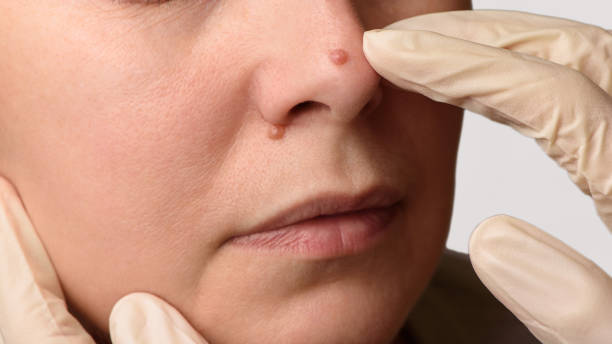Warts removal, those small, grainy skin growths caused by the human papillomavirus (HPV), are a common skin issue. While usually harmless, warts can be unsightly and uncomfortable. They can appear on various parts of the body, including the hands, feet, and face. Fortunately, there are numerous methods for removing warts, ranging from home remedies to professional medical treatments. This guide will explore these methods to help you find the best approach for your needs.
Understanding Warts
Warts are caused by the HPV virus, which infects the top layer of the skin. They can spread through direct contact with a wart or something that touched a wart, such as towels or razors. Although warts can eventually disappear on their own, this process can take months or even years, and they often recur. Removing warts can help prevent this spread and recurrence.
Home Remedies for Wart Removal
For those who prefer natural or at-home solutions, several remedies can be effective:
- Salicylic Acid: One of the most common and effective treatments available over the counter, salicylic acid works by peeling away the infected skin over time. It’s available in various forms, including liquids, gels, and adhesive pads. To use, soak the wart in warm water for 10-15 minutes, then apply the salicylic acid. Consistent application is crucial for successful results.
- Duct Tape: The duct tape occlusion method involves covering the wart with duct tape for six days. After removing the tape, soak the wart in water and gently debride it with a pumice stone or emery board. Repeat the process until the wart is gone. This method is thought to work by irritating the wart, prompting an immune response.
- Apple Cider Vinegar: Acting as a peeling agent, apple cider vinegar can be effective in breaking down wart tissue. Soak a cotton ball in the vinegar, apply it to the wart, and cover with a bandage overnight. However, this method can cause skin irritation, so it should be used with caution.
- Garlic: Known for its antiviral properties, garlic can be used to treat warts. Apply a crushed garlic clove directly to the wart and cover with a bandage, repeating the process nightly until the wart falls off.
Over-the-Counter Treatments
In addition to salicylic acid, several other OTC treatments are available:
- Cryotherapy Kits: These kits use a freezing agent, typically liquid nitrogen, to destroy wart tissue. While effective, multiple applications might be necessary for complete removal.
- Topical Solutions: Besides salicylic acid, there are other chemical treatments available, such as lactic acid or trichloroacetic acid. These solutions are applied directly to the wart and work by breaking down the wart tissue.
Medical Treatments
If home remedies and OTC treatments are ineffective, several medical treatments are available. Consulting a healthcare professional can help you explore these options:
- Cryotherapy: Performed by a doctor, this treatment involves applying liquid nitrogen to freeze the wart. This method usually requires several sessions and can be uncomfortable but is generally effective.
- Laser Treatment: Laser therapy uses a focused beam of light to burn and destroy wart tissue. This method is often used for warts that are difficult to treat with other methods.
- Electrosurgery and Curettage: This procedure involves burning the wart with an electric current (electrosurgery) and then scraping it off (curettage). While effective, it can leave a scar.
- Prescription Medications: In some cases, doctors may prescribe topical or injectable medications that stimulate the immune system to fight off the virus causing the wart. Examples include imiquimod or bleomycin.
- Cantharidin: A doctor applies this blistering agent to the wart, causing a blister to form underneath. The wart can then be removed as the blistered skin heals.
Preventing Warts
While it’s challenging to avoid HPV completely, you can reduce your risk of developing warts by:
- Avoiding direct contact with warts, including your own.
- Not sharing personal items like towels, razors, or shoes.
- Keeping your skin clean and dry.
- Using footwear in public showers and locker rooms.
Conclusion
Warts, though benign, can be bothersome and persistent. A variety of treatment options are available, ranging from simple home remedies to advanced medical procedures. The effectiveness of each method can vary from person to person, so you might need to try a few different approaches to find what works best for you. If in doubt, or if the warts are painful and rapidly spreading, consulting a healthcare professional is always recommended.
Removing warts can improve both your comfort and your confidence, and with the right treatment, you can effectively manage and eliminate this common skin issue.





Comments